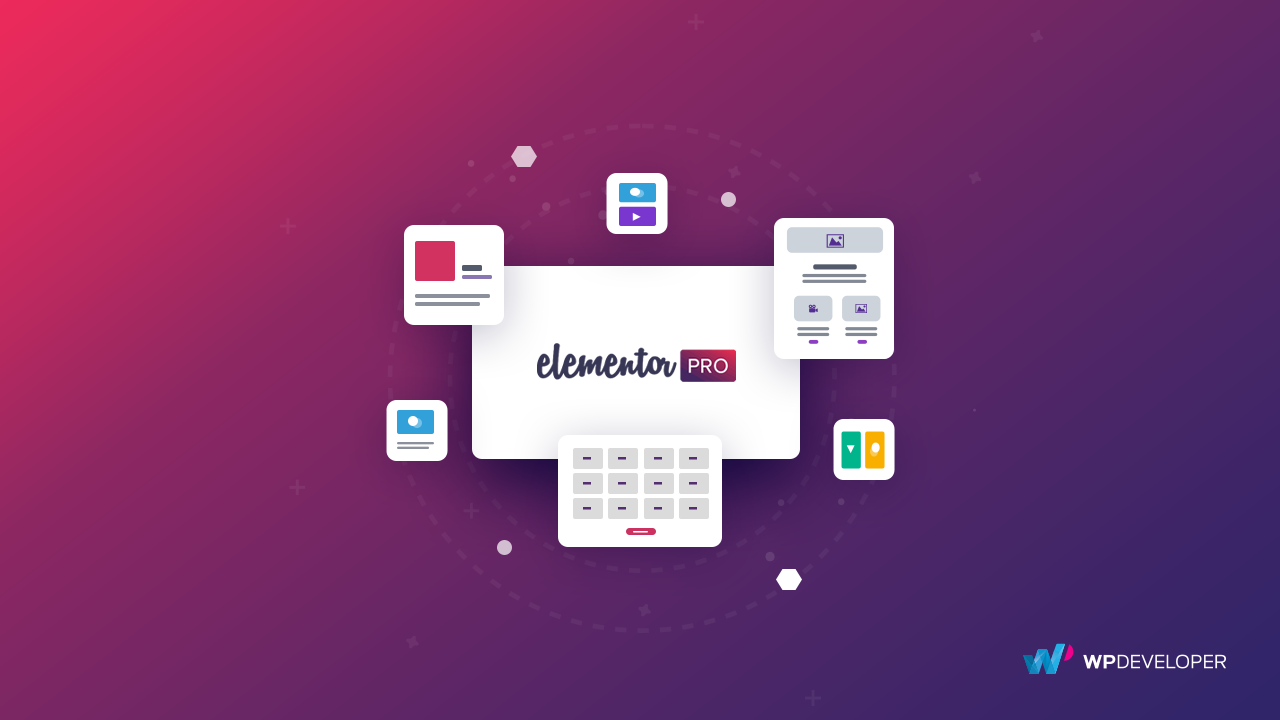
In the digital age, a captivating online portfolio is essential for photographers to stand out and attract clients. A well-designed portfolio not only showcases your best work but also demonstrates your creativity, professionalism, and attention to detail. Elementor, a leading WordPress page builder, offers a powerful platform for creating visually stunning and highly functional photography portfolios.
In this article, we’ll explore how to leverage Elementor to design the perfect showcase for your photography, aligning with the principles of effective management and innovation that Vietnam Insider values.
1. Understanding the Importance of a Strong Online Portfolio
Before diving into the technical aspects, it’s crucial to understand why a compelling portfolio is essential. A well-designed portfolio serves multiple purposes:
- Showcase Your Best Work: It provides a curated view of your skills and style, making it easier for potential clients to assess your capabilities.
- Build Your Brand: A unique and professionally presented portfolio helps in establishing your brand identity and differentiates you from competitors.
- Engage and Convert: An engaging portfolio can convert visitors into clients by showcasing your expertise and creating a memorable impression.
Effective management principles apply here: a portfolio should be meticulously organised, with every element contributing to a coherent and impactful presentation. Elementor offers the tools to achieve this, allowing you to focus on presenting your work in the best light.
2. Leveraging Elementor’s Design Flexibility
Elementor provides a drag-and-drop interface that simplifies the design process, allowing you to create a custom portfolio without needing advanced coding skills. Here’s how you can use Elementor to build a standout photography portfolio:
a. Choose the Right Template: Elementor offers a range of pre-designed templates that can be customised to suit your style. Start with a template that aligns with your vision and modify it to reflect your personal brand.
b. Use Dynamic Content Widgets: Elementor’s dynamic content widgets, such as galleries and image carousels, allow you to display your photographs in engaging ways. Utilise these widgets to create visually appealing galleries that highlight different aspects of your work.
c. Incorporate Interactive Elements: Enhance user experience by adding interactive elements like hover effects, lightboxes, and slideshows. These features not only make your portfolio more engaging but also provide a professional touch.
d. Optimise for Mobile: Ensure that your portfolio looks great on all devices by using Elementor’s responsive design features. With more users browsing on mobile devices, a mobile-optimised portfolio is crucial for reaching a wider audience.
By harnessing Elementor’s design flexibility, you can create a portfolio that not only showcases your work effectively but also enhances the overall user experience.
3. Implementing Effective Organization and Navigation
A well-organised portfolio is easier for visitors to navigate and helps them find the information they’re looking for quickly. Here’s how to use Elementor to implement effective organisation and navigation:
a. Create Clear Categories: Divide your portfolio into clear categories based on different types of work (e.g., portraits, landscapes, events). Use Elementor’s navigation widgets to create a menu that allows users to easily switch between categories.
b. Use Filters and Tags: Incorporate filters and tags to help visitors find specific types of work or themes. Elementor’s dynamic content features can be used to create interactive filters that enhance user experience.
c. Implement a Search Function: Adding a search bar to your portfolio can significantly improve navigation, especially for larger portfolios. Elementor’s search widgets make it easy to integrate a search function that helps users find exactly what they’re looking for.
d. Design an Intuitive Layout: Ensure that the layout of your portfolio is intuitive and user-friendly. Use Elementor’s drag-and-drop functionality to arrange elements in a way that guides visitors through your work seamlessly.
Effective management principles suggest that a well-organised portfolio not only improves user experience but also demonstrates professionalism and attention to detail.
4. Showcasing Your Work with High-Quality Images
The quality of images in your portfolio is paramount. Elementor provides several features to ensure that your photographs are showcased at their best:
a. Use High-Resolution Images: Ensure that all images in your portfolio are high-resolution to maintain visual quality. Elementor allows you to upload and display high-resolution images without compromising on performance.
b. Optimise Image Load Times: Slow-loading images can detract from the user experience. Use Elementor’s image optimization features to ensure fast load times while maintaining image quality.
c. Implement Lightbox Features: Elementor’s lightbox functionality allows visitors to view images in full-screen mode, providing a better viewing experience for high-quality photographs.
d. Create a Consistent Aesthetic: Maintain a consistent aesthetic throughout your portfolio by using Elementor’s design tools to ensure that images are displayed in a cohesive and visually appealing manner.
By focusing on image quality and optimization, you ensure that your portfolio not only looks professional but also provides a seamless experience for visitors.
5. Enhancing User Experience with Elementor’s Interactive Features
Interactive elements can significantly enhance the user experience of your portfolio. When designing the perfect showcase for your photos, incorporating interactive features can make your portfolio more engaging and memorable. Here’s how to use Elementor to add interactive features:
a. Incorporate Hover Effects: Hover effects can add an element of interactivity to your portfolio, making it more engaging. Use Elementor’s hover effect options to create animations or transitions that activate when users hover over images. These effects can highlight details, reveal additional information, or simply add a touch of creativity to your showcase.
b. Add Video and Multimedia Content: To enrich your portfolio, consider including video or multimedia content if relevant. Elementor supports video embedding and multimedia elements that can add depth to your presentation. Videos can showcase behind-the-scenes content, explain your creative process, or provide additional context to your photos, enhancing the overall impact of your portfolio.
c. Create Interactive Sliders: Elementor’s slider widgets are perfect for creating interactive galleries. These sliders allow users to browse through your work with ease, offering a dynamic and engaging way to view your photos. Customizable slider settings enable you to create a unique browsing experience, highlighting different aspects of your portfolio and making it easier for visitors to explore your work.
d. Use Parallax Scrolling: Parallax scrolling effects can add a sense of depth and movement to your portfolio. Elementor’s parallax features allow you to create dynamic backgrounds and layered visual effects that enhance the visual appeal of your site. This technique not only makes your portfolio more visually interesting but also helps in creating a memorable experience for visitors.
Interactive features not only make your portfolio more engaging but also help in designing the perfect showcase for your photos. By incorporating these elements, you can create a portfolio that captivates visitors, highlights your work effectively, and leaves a lasting impression.
6. Ensuring Seamless Integration with Social Media
Social media integration is essential for promoting your portfolio and reaching a broader audience. Elementor offers several tools to help you integrate social media seamlessly:
a. Add Social Media Buttons: Incorporate social media buttons to allow visitors to easily share your work on platforms like Instagram, Facebook, and Twitter. Elementor’s social media widgets make this integration straightforward.
b. Display Social Media Feeds: Showcase your latest social media posts directly on your portfolio. Elementor’s social media feed widgets can be used to display content from platforms like Instagram, providing visitors with a real-time view of your updates.
c. Implement Social Proof: Use testimonials and client reviews from social media to build credibility. Elementor’s testimonial widgets allow you to display social proof effectively, enhancing your portfolio’s credibility.
By integrating social media into your portfolio, you not only increase your reach but also provide visitors with multiple ways to connect with and share your work.
7. Optimising Your Portfolio for Search Engines
Search engine optimization (SEO) is crucial for ensuring that your portfolio is easily discoverable by potential clients. Elementor provides several SEO features to help you optimise your site:
a. Use SEO-Friendly Titles and Descriptions: Ensure that each page and image in your portfolio has SEO-friendly titles and descriptions. Elementor allows you to customise meta titles and descriptions, improving your site’s visibility in search engine results.
b. Implement Schema Markup: Schema markup helps search engines understand the content of your site better. Use Elementor’s SEO tools to add schema markup to your portfolio, enhancing its search engine visibility.
c. Optimise Image Alt Text: Provide descriptive alt text for all images in your portfolio. This not only improves accessibility but also helps search engines understand the content of your images.
d. Improve Page Load Speed: A fast-loading portfolio is essential for SEO. Use Elementor’s performance optimization features to ensure that your portfolio loads quickly and efficiently.
SEO optimization is a key component of effective online management, helping you to ensure that your portfolio reaches the widest possible audience.
8. Maintaining and Updating Your Portfolio
A successful portfolio is one that evolves with your work. Regular maintenance and updates are crucial for keeping your portfolio relevant and engaging:
a. Regularly Update Content: Keep your portfolio up-to-date by regularly adding new work and removing outdated content. Elementor makes it easy to update and manage your portfolio’s content without needing technical expertise.
b. Monitor Performance: Use analytics tools to monitor the performance of your portfolio. Elementor’s integration with tools like Google Analytics allows you to track visitor behaviour and make data-driven improvements.
c. Seek Feedback: Gather feedback from clients and peers to continuously improve your portfolio. Elementor’s user-friendly interface makes it easy to make adjustments based on feedback.
By maintaining and updating your portfolio regularly, you ensure that it remains a valuable tool for showcasing your work and attracting new clients.
Conclusion
Designing the perfect showcase for your photography portfolio requires a combination of creativity, technical expertise, and effective management. Elementor offers a powerful platform that empowers photographers to create stunning, functional portfolios that highlight their work and engage their audience. By leveraging Elementor’s design flexibility, interactive features, and SEO tools, you can build a portfolio that not only showcases your best work but also enhances the user experience and drives client engagement.
Incorporating effective management principles into your portfolio design ensures that it is organised, optimised, and continually evolving to meet the needs of your audience. By following the strategies outlined in this article, you can create a photography portfolio that stands out in the digital landscape and helps you achieve your professional goals.
By aligning with the principles of effective management and innovation that Vietnam Insider values, your portfolio will not only showcase your photography skills but also demonstrate your commitment to excellence and creativity.

